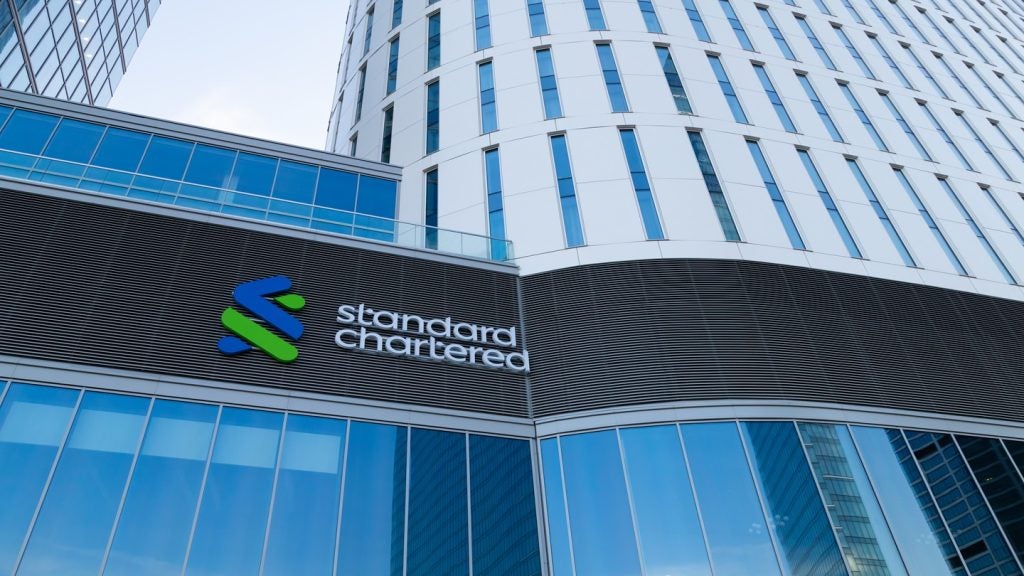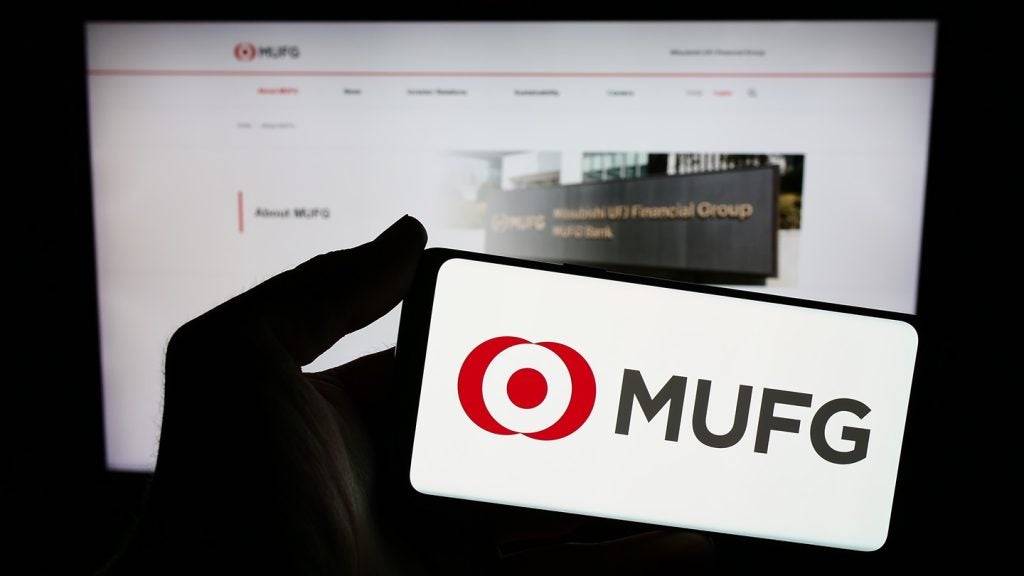outperform their US rivals in the increasingly competitive wealth
management arena, as a recent survey of key performance indicators
shows. The US banks are trying to raise their game but seem to be
falling behind.
The European advisory model of private banking, as opposed to
structures in wide use in the US and elsewhere that depend on
transaction-based securities brokerage, continues to significantly
outstrip its cross-Atlantic peers, based on a range of key
performance indicators.
How well do you really know your competitors?
Access the most comprehensive Company Profiles on the market, powered by GlobalData. Save hours of research. Gain competitive edge.

Thank you!
Your download email will arrive shortly
Not ready to buy yet? Download a free sample
We are confident about the unique quality of our Company Profiles. However, we want you to make the most beneficial decision for your business, so we offer a free sample that you can download by submitting the below form
By GlobalDataEuropean players as a whole continue to enjoy superior gross and
pre-tax margins. Indeed, with their full-service fee-based model,
the European players are pulling away from their US rivals.
For example, pure play Swiss bank EFG International posted a gross
margin on assets under management (AuM) of a class-beating 123
basis points in the first-half of 2007 (albeit with a slower
performance in the third quarter as the subprime crisis unnerved
investors). Among the majors, Credit Suisse reported a 116 basis
point margin and HSBC 98 basis points. UBS posted a figure of 93
basis points.
Their nearest US rival by this measure, Morgan Stanley, recorded 89
basis points. Merrill Lynch (85), Bank of America (84) and
Citigroup (72) trailed the Europeans, according to data compiled by
Bear Stearns International. The latest edition of its annual study,
by analyst Christopher Wheeler, is widely regarded as one of the
most comprehensive research works into the inner finances of the
global private banking business.
Credit Suisse, HSBC, UBS and Deutsche Bank have all enjoyed an
improvement in their gross margins in recent months. This is
despite a greater focus on the ultra high net worth segments, where
there is a lower gross margin (generally 55 basis points to 45
basis points) and low cost-income ratio (40 percent or less), the
study notes, saying: “However, we believe this improvement in gross
margin reflects a continued shift of clients into higher-margin
alternative asset classes.”
Ranked by pre-tax margin, HSBC is the class leader at 45.4 percent
in the first half of 2007, followed closely by Credit Suisse (41.8
percent). UBS (35.3 percent) and Bank of America (34.5 percent)
also perform creditably. If UBS’s lower-margin US wealth management
operation is excluded, it could actually top the table with a very
impressive pre-tax margin of 49 percent.


US issues
As UBS has discovered in managing US wealth, changing the way US
wealth management businesses operate is no simple task, the study
asserts. “While a greater number of asset-based accounts in Europe
helps boost the gross margin, the lack of flexibility of (US)
financial adviser compensation is a much thornier issue,” it
maintains.
Wealth management compensation in Europe and Asia tends to be
calculated on a basis similar to investment banking compensation,
taking the form of a salary plus a bonus calculated on a number of
performance-related measures. In US wealth management, the
benchmark of being paid around 40 percent of attributable revenues
remains the norm, and the report says “changing this has proved
difficult”.
UBS has been trying to move the compensation of US financial
advisers to a greater focus on net new money generated, in an
initiative outlined last year; however, it has recently conceded
that only 5 percent or so of US financial advisers’ compensation is
based on this formula. UBS does remain absolute leader in terms of
actual pre-tax profits, with $5.67 billion in the first half of
this year. To give a measure of its clout, this is equivalent to
nearly 25 percent of the total pre-tax profits of the top ten
global private banks.


Merrill Lynch posted pre-tax earnings of $3.71 billion in the
period, or just over 16 percent of the top ten banks’
profits.
UBS was also the leader ranked by wealth management revenues. On an
annualised basis, it generated turnover of $16.1 billion in first
half of 2007. This was equivalent to nearly 21 percent of the
revenues generated by the top ten private banks. Merrill was ranked
second, with $14.0 billion, for an 18.3 percent share.
In the rankings for adviser productivity, JPMorgan Chase is the
class leader. Each of its financial advisers on average managed
$324.3 million of client assets in the first half of 2007. This is
understood to be a reflection of the ultra-wealthy clients in which
the bank specialises, including many family fortunes.
Credit Suisse followed with $247.6 million, while UBS was a distant
third at $137.4 million. Ranked by average revenues per financial
adviser, Credit Suisse was the easy winner with $2.74 million.
JPMorgan Chase recorded a figure of $2.20 million and, again, UBS
lagged these leaders with $1.21 million.
Faced with such competitive disadvantage, the US players have been
moving to raise their game, often by emulating the advisory model.
“The move towards the full-service model and the shift of clients
away from traditional transaction-based accounts is accelerating,
accompanied by a greater emphasis in serving ultra-high net worth
individuals, where the full-service model provides a competitive
advantage,” the Wheeler study notes.
Indeed, Bank of America’s acquisition for $3.3 billion of U.S.
Trust, with its blue chip client list, confirms the importance
wealth managers are placing on the ultra-wealthy segment. Another
measure of success in the US wealth market is the growing
proportion of asset-based accounts – fee-bearing accounts that
produce annuitised revenues. In 2002, the ratio for the larger
US-based players was certainly less than 20 percent. Now it has
moved up to much higher levels, with Merrill Lynch leading the way
at 39 percent. Clearly, the 30 percent of asset-based accounts at
UBS put it at a major disadvantage to its great rival, the study
notes.
UBS US wealth management effectively earns 61 percent of its
revenues from just 30 percent of its AuM, while Merrill Lynch earns
49 percent of its revenues from 39 percent of its AuM. So while UBS
US is doing exceptionally well in terms of just under one-third of
this AuM, a large proportion of its AuM earns very little. This
reinforces why the US wealth managers are trying to shift more
assets into fee-based accounts.
Whatever the geographic origin of wealth managers and their
business models, most have enjoyed handsome returns from the wealth
business amid buoyant markets. Their aggregated annualised
first-half 2007 earnings grew some 59 percent to $22.9 billion
compared with 2005 levels, as players refined their businesses and
extracted leverage from their franchises.

Client winner
In terms of strategy, wealth managers’ ability to offer
high-quality, sought-after product has become an “increasingly
important tool in winning clients”, the study observes. Although
the development of in-house product, particularly structured
product, has continued at a pace, in the past 18 months wealth
managers have become more proactive in cementing access to external
product.
This has taken a number of forms. Several wealth managers have
followed the route established by JPMorgan Chase, which acquired a
controlling stake in Highbridge Capital in 2005. However, others
have avoided the risks of controlling alternative asset management,
an area in which UBS has had a particularly bad experience this
year with its Dillon Read hedge fund venture. Instead, they have
formed closer links with product providers by forming joint
ventures or taking meaningful minority stakes that provide
preferential access to product, it notes.
Finally, the Bear Stearns analysis makes interesting reading at a
time when many banks are bleeding from their investment banking
operations and the subprime crisis, while private banking is
vitally providing their continued revenues and profits
streams.

Boston Consulting Group has estimated that total worldwide wealth,
including mass affluent client assets, has reached almost $100
trillion. If these assets earned a conservative gross margin of 50
basis points, Wheeler observes, then this would yield fees of
around $500 billion annually. “This compares to the total revenues
generated by the world’s top ten investment banks in 2006 of $193
billion,” he notes.
No wonder private banking is such a priority at so many financial
institutions, a trend that can only accelerate if the subprime
credit crisis takes several months to resolve. For example, the
proportion of group pre-tax profits at UBS represented by
high-quality wealth management earnings has risen to 39.0 percent
from 36.7 percent of the total. This trend has been replicated at
Merrill Lynch (to 30.3 percent from 29.4 percent) and Wachovia (to
16.6 percent from 13.1 percent).
“This is clearly very positive for these banks’ overall valuations,
particularly when one considers the valuations placed on
asset/wealth managers compared to commercial/investment banks,”
Wheeler concludes.









